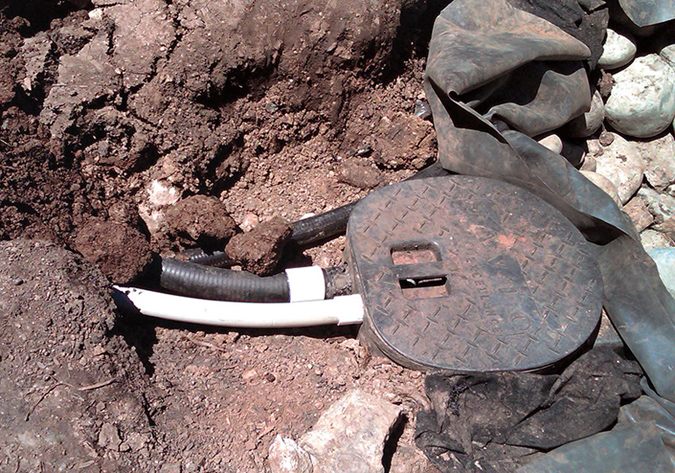
The water garden industry as a whole is still evolving, and with that, there are few, if any standards or regulations in place for us to follow. As professionals, we are responsible for being knowledgeable about our trade and following procedures and any safety standards set forth by our local government agencies. However, the rest is up to us as we determine the best options for each individual project. The water garden industry consists of many different types of bodies of water, each serving a unique purpose and performing different effects. So, it is hard to have one set of rules or standards to follow in order to build properly and accomplish the best result.
Our industry is essentially a big mix of many different industries. At first glance, it might seem like a simple mix of the plumbing and landscape industries, but it’s more complicated than that. There is clear overlap with the pool and aquarium industries, with our adaptation of their filters and pumps. We also cross over into the automotive industry for their sealants, and into the medical industry for various treatments and dosing systems. This all serves a common goal — to see clean, clear, flowing water.As with any evolution, time must pass for us to perfect these new creations. Thus, we as installers need to adapt and find the best implementation options, while at the same time thinking several steps ahead and, of course, keeping safety at the forefront.
Not all projects I encounter appear to have been completed with the quality or effort required to yield the best performance. This makes me worry that the stage has been set for our industry to be weak when it comes to following quality standards. Some of this may be driven by the varying state building codes and regulations, but it’s even more evidence that our industry needs to voluntarily adopt standards that control the quality of products and installations, similar to what the pool industry has done. This needs to happen before we are forced by the government to follow methods that may not realistically relate to our wide range of projects.
Continuing Education
We are fortunate to have manufacturers in our niche industry that offer education to help us learn how to properly install their components. Taking these courses is essential to capture a full understanding of the products and allow for proper installation. If you are just starting out, I recommend contacting a manufacturer and requesting information about some of their educational offerings.
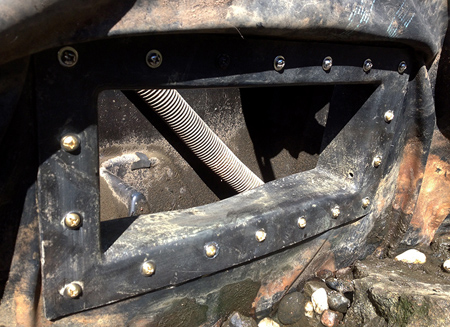
For example, companies like Aquascape have online classes that cover the fundamentals of water-garden husbandry, ecology, filtration, water chemistry, installation tips and essential business practices like accounting, marketing, human resources and sales. They also offer hands-on training events that I highly recommend, because you can see firsthand how a professional tackles an installation while actually participating in the process, adding your own artistic skills and sharing ideas with others. Pondliner’s annual Water Garden Expo also offers valuable hands-on experience. These education opportunities shouldn’t be taken lightly. Too often I see projects completed with absolutely no accuracy, which tells me that the installer hadn’t taken any training courses. This is ultimately a disservice to the customer and hurts the industry as a whole.
This brings me back to the vital training and education courses that manufactures offer to help avoid botched projects. Over my many years in the industry, I have dedicated about 1,000 hours every year to taking training courses and seizing opportunities to work with other industry leaders on construction projects to continue to hone my skill as a professional installer. This allows me to see the many different ways our industry is evolving to create quality water features with clean and clear water.
What Makes a Quality Project?
There are several reasons why quality often falls low on the priority list and ends up an afterthought. Many times, quality is dictated by the customer’s budget, regardless of whether or not a contractor wants the project to be built to the best standards. Sometimes the customer has an unspoken expectation that the contractor will automatically build it at the highest quality, despite the agreed-upon price. Unfortunately for most customers, it turns into a “buyers beware” situation, where the contractor will only build a project according to the budget, regardless of any spoken or unspoken standards or requirements. Perhaps if there were more adopted standards across the industry, the customer could count on a proper install in the first place.
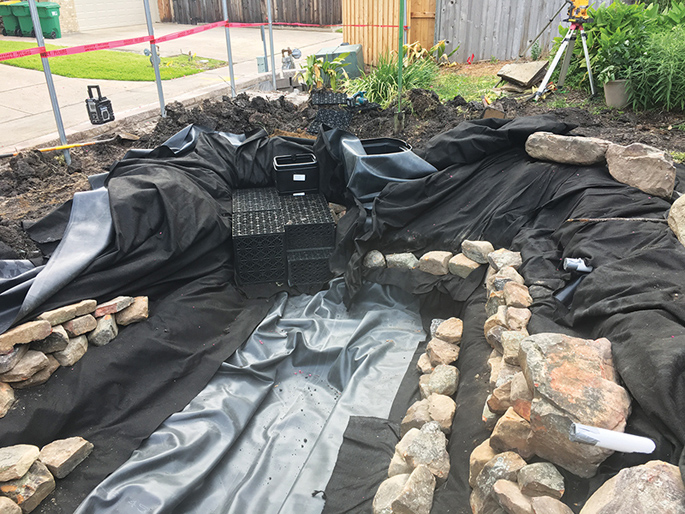
So, how long should the life of a project be? Government projects in many cases are required to be engineered to last 100 years. But, with residential projects, the standard typically is five to 10 years. Most water gardens built today with the latest products and technology available could easily last 10 years without structural and mechanical failure. I find that failure in building water gardens is often attributed to base material or aggregate that undergoes movement from improper substrate used or inadequate substrate compaction. Other times, failure can be chalked up to bad plumbing connections or metals that rust or oxidize thanks to incorrectly chosen alloy metals. Also, waterproof membrane (commonly 45-mil EPDM rubber) degradation, lack of protection or improper exposure can cause a project to fail to perform as intended.
Forces of Failure
When addressing the foundation of a water garden, you need to consider the fact that you are creating a structure that will hold the weight of the water in it. It will also be exposed to water movement, which can cause erosion throughout its expected life. I also find that the areas around the feature can be exposed to foot traffic, which will cause additional movement of the membrane and the components it supports.
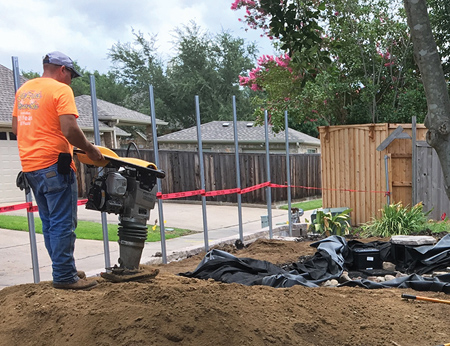
The best way to insure minimal movement of the soil or substrate used for your base material is proper compaction. I like to use a motorized jumping jack compactor during the construction of a water garden, focusing on the perimeter of the feature, like the border of the pond and stream areas. During any mounding, I will compact in 6-inch layers to insure there are no voids that don’t get compacted. I will also overbuild the mound and then cut the desired shape out of the compacted mound. When the area is compacted and shaped, you can cover the area with the membrane, preventing any erosion from surface water. The areas not covered with the membrane can be covered with a variety of materials like geotextile fabric, mulch or plant materials. In high-traffic areas like the skimmer area, which is most likely surrounded by underground plumbing and electrical equipment, I like to add additional stabilization to the substrate surrounding the skimmer. This can be as simple as building a visual steppingstone set in concrete. For a subtler appearance, use pea gravel layered over geotextile fabric to help disperse the foot-traffic load and prevent erosion.
Coping with Components
This can be a double-edged sword, because even if you do all the right things to prevent failure, the component itself can fail, causing even more insult to injury. I have found that choosing the best materials for the application and maintaining a strong foresight into what the project should look like in coming years will help enhance the success of your installation. There is no crystal ball for us to look into, so the best thing you can do is to educate yourself on your surrounding environment and determine how it may affect the components in your project.
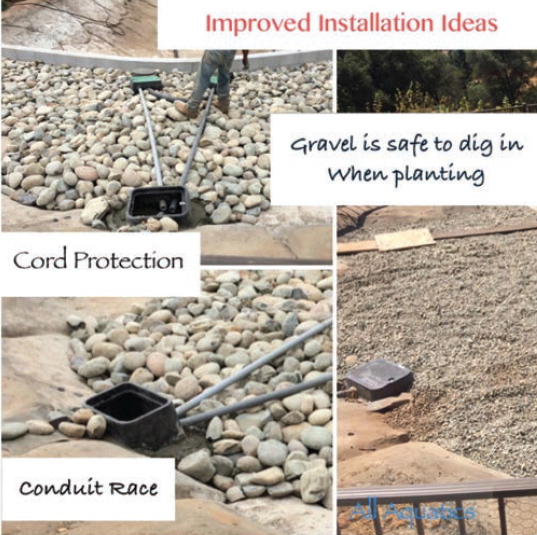
One key question to always start with is, “How can you support the product you are installing?” Let’s consider a project with power cords that pass from a pump housing to a power outlet. These should be supported and protected from the elements by passing through a PVC conduit. Likewise, control boxes like pumps, rheostats and transformers should be mounted at least a foot off the ground and housed in a weather-tight box. Plumbing also can become weathered and may crack when exposed to the elements. To reduce the risk of cracking, I place all valves below the frost line in an in-ground valve box with a geotextile fabric bottom, preventing settling and pest intrusion. When choosing hardware for mounting, I choose 316 stainless steel because it ensures durability in marine applications. I have found that the use of aluminum hardware becomes problematic when it comes in contact with other metals over an extended period of time.
Liner membrane should also be sized properly and protected based on the application. Features with stones weighing up to 100 pounds should only have geotextile underlayment fabric under a 45-mil EPDM liner. If it has stones weighing up to 2,000 pounds, it should have, at minimum, the same underlayment placed above and below the liner to avoid punctures over time. And if you’re using even larger stones, I recommend the addition of rock-pad underlayment on top. In fact, I would like to see an industry standard implementation of 60-mil EPDM liner and rock-pad underlayment on the top and bottom to ensure that the waterproofing membrane can stand up to all the elements.
I hope this starts to set the stage for our industry to implement “quality without question” into every project, ultimately resulting in water gardens built with standards that all customers can expect.


